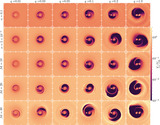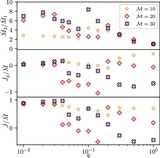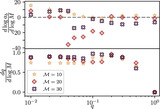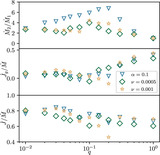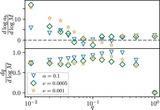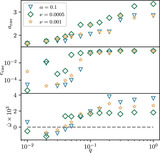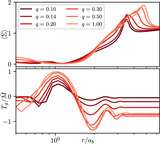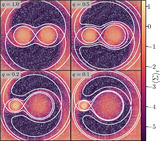Image Details
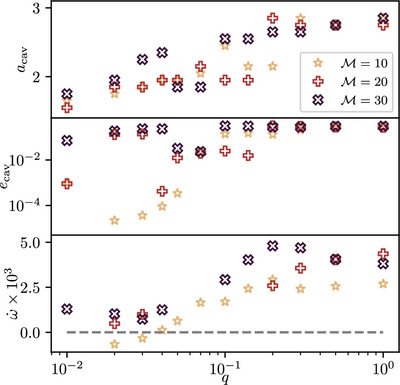
Caption: Figure 6.
Orbital properties of the inner edge of the circumbinary disk cavity/gap—the semimajor axis, scalar eccentricity, and longitude of periapsis—from q = 0.01 to q = 1 at ﹩{ \mathcal M }\in \{10,20,30\}﹩ disks with ν = 0.001, averaged in time over the last 500 orbits of each simulation. Although all three quantities tend to decline as mass ratios decrease from q = 1, they do not do so monotonically. Notably, at certain intermediate mass ratios at ﹩{ \mathcal M }=20﹩ and ﹩{ \mathcal M }=30﹩, the cavity becomes much smaller and more circular and ceases to precess in a meaningful way; however, even in these cases the typical magnitude of the disk eccentricity is larger than for some lower-q binaries that still have well-defined, precessing, eccentric disks. Interestingly, at low mass ratios, some ﹩{ \mathcal M }=10﹩ disks precess in a retrograde rather than prograde sense. Numerical values are provided in Table 4.
Copyright and Terms & Conditions
© 2024. The Author(s). Published by the American Astronomical Society.


